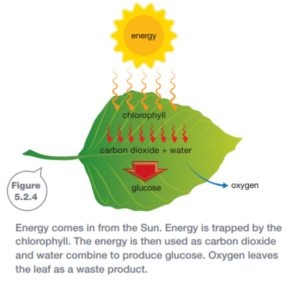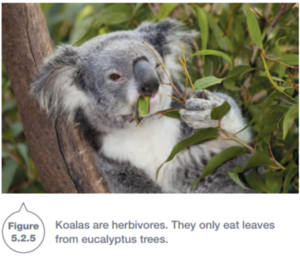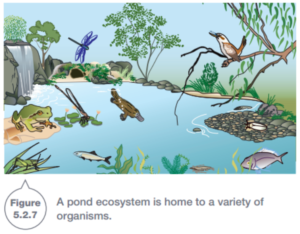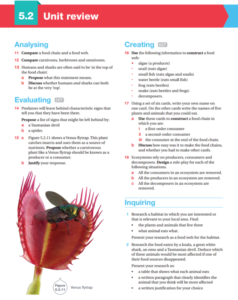Healthy ecosystems usually contain different habitats and a variety of organisms. The organisms living there interact in different ways. Food is one of the most important needs of all living things. Therefore one of the relationships. some organisms do the eating. Other organisms are food.
Predators and prey
For an organism to live in a particular habitat, that habitat must provide adequate food or nutrients. Animals must consume other animals or plants to get their food. Animals that eat other animals are called predators.

If two animals eat the same sort of food and live in the same habitat, then they must compete for food; they are competitors.
Rabbits were introduced into Australia during the 1830s and they compete with many native animals for food, living space, water, and shelter.
Food chains
Plants and animals use energy in growing and in day-to-day activities. Plants get their energy from sunlight, and animals get their energy from the food they eat. For exxample, the grass uses the energy from sunlight to make the food it needs to be able to grow. A grasshopper may eat the grass to get the energy it needs and a kookaburra might eat several grasshoppers to get the energy it needs. When the kookaburra dies, bacteria will help to decompose its body. The bacteria get the energy they need. The nutrients stored in the body of the kookaburra are returned to the soil and help more grass to grow.
This flows of energy from organism to organism is called a food chain.

A food chain is usually drawn as a simple chart like this:


The direction of the flow of energy is shown by the arrows. The Sun is not an organism but it is included above as the original energy source.
Producers, consumers and decomposers
Food chains start with the Sun. Plants trap the Sun’s energy in their leaves using a chemical called chlorophyll.
Plants use a process known as photosynthesis. Plants trap energy from the sun and combine water and carbon dioxide to make a simple sugar called glucose. Oxygen is also produced.
Plants are producers because they produce their own food.

Animals cannot make their own food and must consume (eat) plants or other animals to get the energy and nutrients they need. Animals are therefore called consumers. Consumers such as grasshoppers, kangaroos, and koalas that eat only plants are known as herbivores (Figure 5.2.5). Consumers such as lions, dingoes, and kookaburras that eat only other animals are called carnivores.
Omnivores are consumers that eat plants and animals. Humans, the bilby, and some bears are examples of omnivores.

When a plant or animal dies without being eaten, its body is broken down by de composers.
Decomposers are organisms such as bacteria and fungi that are able to get the energy they need as they break down dead matter and waste products. You can see a type of fungus in Figure 5.2.6, helping to break down a dead tree stump.

In the food chain:
![]()
the grass is the producer, the grasshopper is a first-order consumer and the kookaburra is a second-order consumer.
In another food chain, a lizard could eat the grasshopper. The lizard could then be eaten by the kookaburra. The new food chain would look like this:
![]()
In this food chain, the lizard is the second-order consumer and the kookaburra is a third-order consumer.
Food webs
In the pond
In the pond ecosystem shown in Figure 5.2.7, small fish live in constant danger of being eaten. If they go too close to the surface, birds might catch them. If they move away from the protection of the pondweeds, large fish will catch and eat them. The edge of the pond is also dangerous because frogs and birds are always alert for an easy meal.

Joining a number of food chains together produces a food web.
Changes often occur in food webs as the populations of different organisms increase, decrease or disappear altogether.



